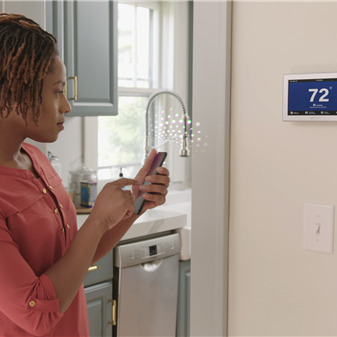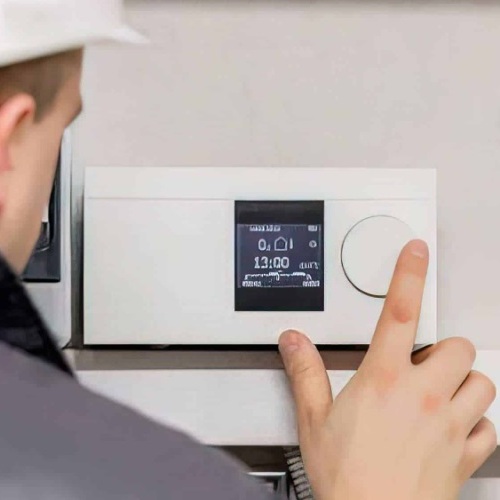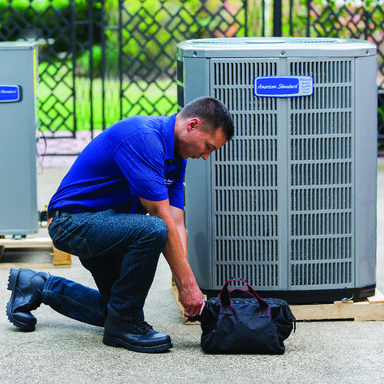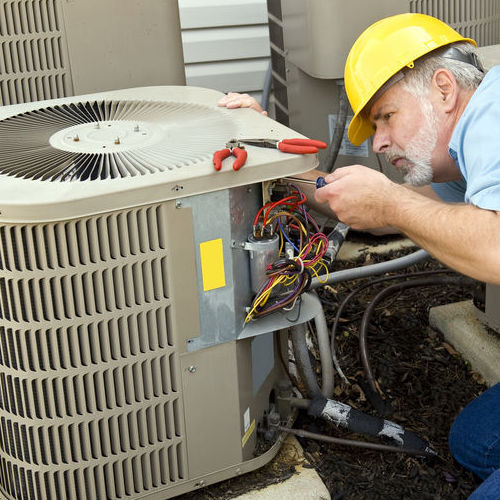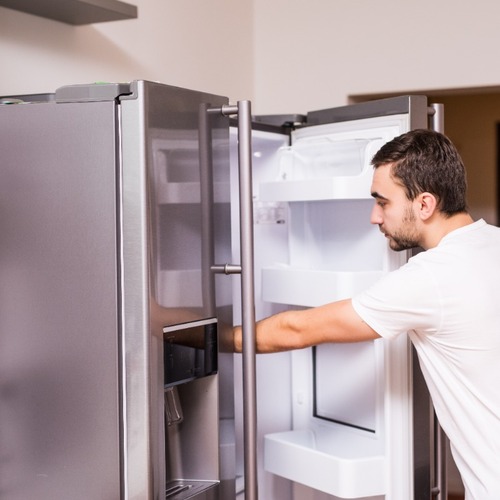
Troubleshooting and Repairing Your Refrigerator: A Comprehensive Guide to Refrigerator Maintenance
Your refrigerator is the unsung hero of your kitchen, diligently keeping your food fresh and your beverages cold. However, when it starts acting up, it can be a cause for concern. In this comprehensive guide, we will explore common refrigerator issues, DIY troubleshooting tips, and when it’s time to call in the professionals for refrigerator repair.
Experiencing refrigerator issues? Don’t let food spoil or energy bills soar. Our expert technicians are ready to restore your refrigerator’s optimal performance. From strange noises to temperature inconsistencies, we’ve got you covered. Schedule a professional refrigerator repair in Waco-Temple-Killeen, TX today and enjoy peace of mind knowing your appliance is in capable hands. Contact Campbell's Appliance, Heating & Air Inc. at (254) 501-7318 for prompt and reliable refrigerator repair services. Don’t delay – act now to preserve your perishables and ensure your kitchen runs smoothly. Your satisfaction is our priority, and we’re here to bring your refrigerator back to life!
Common Refrigerator Issues That Might Require Refrigerator Repair:
- Temperature Fluctuations:
- If you notice inconsistent temperatures in your refrigerator, it could lead to spoiled food. Check the thermostat settings and make sure the vents are not blocked by items. If the issue persists, it might be a malfunctioning thermostat or a problem with the cooling system.
- Excessive Frost Buildup:
- Frost buildup in the freezer can lead to reduced efficiency and increased energy consumption. Check the door gaskets for any gaps or damage, and ensure the door is sealing properly. If the problem persists, it could be a faulty defrost timer or a malfunctioning defrost heater.
- Leaking Water:
- A pool of water beneath your refrigerator can be a sign of various issues. Check the water line for leaks and inspect the drain pan for cracks. If the problem continues, it might be a clogged defrost drain or a malfunctioning water inlet valve.
- Unusual Noises:
- Strange sounds emanating from your refrigerator, such as buzzing, rattling, or clicking, may indicate a problem. Clean the condenser coils and check for any loose or vibrating components. If the noises persist, it could be a malfunctioning compressor or a faulty fan motor.
- Faulty Ice Maker:
- If your ice maker is producing less ice than usual or has stopped working altogether, inspect the water supply line for any blockages. Ensure the freezer is at the correct temperature. If issues persist, it might be time to examine the ice maker assembly or the water inlet valve.
DIY Troubleshooting Tips:
- Clean the Condenser Coils:
- Over time, dust and debris can accumulate on the condenser coils, affecting the refrigerator’s cooling efficiency. Regularly vacuum or brush off the coils to keep them clean.
- Check the Door Seals:
- Damaged or worn-out door gaskets can lead to temperature fluctuations and energy waste. Inspect the seals for any visible damage, and replace them if necessary to ensure a proper seal.
- Unclog the Defrost Drain:
- If water is pooling in the bottom of the freezer, the defrost drain may be clogged. Gently unclog it using a pipe cleaner or a mixture of warm water and mild detergent.
- Inspect the Thermostat Settings:
- Ensure that the thermostat is set to the recommended temperature (around 37°F for the refrigerator and 0°F for the freezer). Adjust the settings if needed.
- Test the Door Switch:
- The door switch, which turns off the light when the refrigerator door is closed, may also impact the cooling. Check if the light goes off when the door is closed; if not, the switch may need replacement.
When to Seek Professional Refrigerator Repair Services:
While some issues can be addressed with DIY troubleshooting, there are instances where professional refrigerator repair is the wisest choice:
- Motor or Compressor Issues:
- Problems with the compressor or motor often require specialized knowledge and tools. If you notice issues related to these components, it’s time to call in a professional technician.
- Refrigerant Leaks:
- If you suspect a refrigerant leak, it’s crucial to contact a professional technician immediately. Refrigerant leaks pose health risks and require expert handling.
- Electrical Problems:
- Electrical issues, such as faulty wiring or a malfunctioning control board, should only be handled by experienced technicians to ensure safety.
- Ice Maker Malfunctions:
- If troubleshooting steps for the ice maker yield no results, it’s best to consult a professional. Ice maker assemblies and water inlet valves may require specialized attention.
Go Beyond DIY Troubleshooting and Get Professional Help
If you find yourself facing persistent refrigerator issues that go beyond simple troubleshooting, it’s time to take action. Our team of experienced refrigerator repair technicians is ready to provide prompt and reliable service. Here’s why you should choose us:
- Expert Technicians:
- Our technicians are highly trained and experienced in diagnosing and repairing a wide range of refrigerator issues. Trust us to get to the root of the problem and provide effective solutions.
- Prompt Service:
- We understand the urgency of refrigerator issues, especially when it comes to preserving your perishables. Our team is committed to providing prompt service to minimize downtime and inconvenience.
- Transparent Communication:
- We believe in transparent communication with our customers. Before any repair work begins, we will thoroughly explain the issue, the necessary repairs, and provide a detailed estimate. No surprises, just honest service.
- Quality Repairs:
- Our goal is not just to fix the immediate issue but to ensure long-lasting performance. We use quality parts and follow industry best practices to deliver repairs that stand the test of time.
- Customer Satisfaction Guaranteed:
- Your satisfaction is our priority. We stand behind our work, and if you’re not satisfied with the repair, we’ll work with you to make it right. Your peace of mind is essential to us.
Contact Us Today for Expert Repair Services from Campbell's Appliance, Heating & Air Inc.
Don’t let refrigerator issues disrupt your kitchen routine. Contact us today at (254) 501-7318 to schedule a refrigerator repair service. Our dedicated team is ready to bring your refrigerator back to optimal performance, ensuring your food stays fresh and your kitchen stays running smoothly. Trust us for reliable, professional, and efficient refrigerator repair services.


